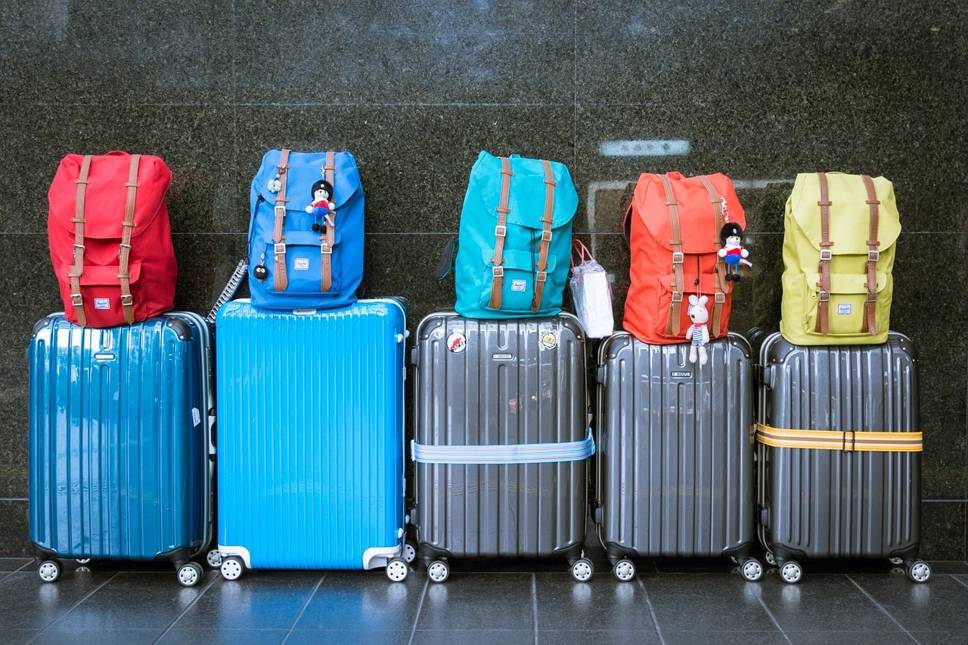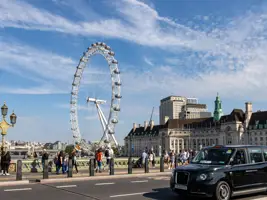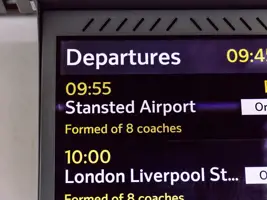The ultimate guide to the attractions of London!
Optimise luggage space
23rd June 2022
How to optimise your hand and hold luggage space
The increase in the cost of living these days means many of us are carefully watching what we spend. But it doesn’t mean giving up on our holidays. What it does result in, though, is cutting back on baggage costs (which can sometimes be more than the flight itself). To do this requires careful planning and some cunning. It’s all about the hand luggage, after all.
If that’s you and you’re planning a mini-break – or even a transatlantic trip – any time soon, then read on. We’ll tell you roughly how much you can take, how to pack and tips you may find invaluable.

Hand luggage dimensions
Different airlines have different hand luggage baggage allowances. Not only is that confusing, but they can also change them year by year. For that reason, checking your airline’s website for sizing before you start packing is always essential. And don’t forget weight too.
Larger international airlines tend to have a size restriction of 55 x 35 x 20 cm or 22 x 14 x 9 inches. For smaller airlines, you’re looking at 40x25x20 cm (Ryanair) or 45 x 36 x 20 cm (easyJet).
Here’s a list of some of the more popular UK airlines and their current size restrictions:
| British Airways | 1 cabin bag + 1 laptop/handbag |
56x45x25cm 40x30x15cm |
23kg combined weight |
|---|---|---|---|
| easyJet | 1 cabin bag | 45x36x20cm | 15kg |
| KLM | 1 cabin bag + 1 small bag |
56x45x25cm 40x30x15cm |
12kg combined weight |
| Ryanair | 1 small bag | 40x20x25cm | No weight restrictions |
| TUI Airways | 1 cabin bag | 55x40x20cm | 10kg |
| Virgin Atlantic | 1 cabin bag + 1 personal item |
56x36x23cm | 10kg |
What bag is cabin size?
Rucksacks and holdalls are generally the type of bags best suited to either fit on overhead luggage racks or under the seat in front. Large tote bags can also be used, but they should be able to zip up. The main thing is to ensure the bag is within the airline’s size restriction and has soft sides (that way, it’s easier to squeeze into awkward corners etc.). Small trolley bags are easier than a holdall to move, but they tend to be hard-sided, so not quite as flexible.
Now you’re probably wondering how much you can fit in hand luggage? Well, surprisingly – quite a lot, especially if you do a little planning beforehand with your clothing and other essential holiday items. And, on that point, is everything you always take essential to pack? For instance, to save space in your bag, you could buy toothpaste, suntan lotion, face cream etc., at your destination. Buy your perfume as you go through duty-free. Not only will you be able to take it on board with you, but you will also have saved yourself a few pounds buying it that way rather than at High Street prices.
How to pack a suitcase
For most people, clothes will take up the bulk of the room in their travel bag. But it’s amazing how small they can be made – especially when you use compression packing cubes. Put your threads in one of these and watch as the air gets sucked out when you zip the bag shut. Those jeans you’ve just put in have amazingly shrunk to the size of a packet of crisps.
Before you put your clothes in a compression bag, you have to fold them the right way – or rather roll them tightly so you can squeeze them into a corner of your case, making sure you keep all the rolled items beside each other. With larger items, such as dresses, long skirts and bodysuits, you can layer them in the bottom of the case and then fold them over as you close it. That way, not only will you get more into your case, but you’ll have fewer creases too.
Before you decide on what clothing you’re taking with you, check if there’s a washing machine nearby (most AirBnB apartments have one) or use the hotel’s launderette service. You can then take as little as possible but simply wash the outfits throughout your stay.
If you’re in B ‘n’ B, though, and there are no laundrettes nearby, pack items that you can easily mix and match. That way, you’ll get more than one day’s wear from each item. Three pairs of either trousers or a skirt, three tops and three warm woolly items should give you more than 10 different outfits if all the items coordinate.
The best way to ensure they look good together is to stick to neutral colours such as black, grey, beige and white. Lightweight, natural fabrics, such as linen and cotton, are best in terms of materials.
Shoes can be stuffed with tights and socks and made compact by placing them toe to heel in your bag. Wrap fragile items inside socks, such as sunglasses or reading glasses, and protect them by encasing them in your shoes. It goes without saying that you should wear your bulkier items on the plane. That means big boots, jumpers, padded jackets etc. Jackets with lots of pockets can be handy (such as one of those jackets or gilets often worn by professional photographers). Remember, you can always strip off once you get on the plane if it gets too hot or uncomfortable.
More tips for packing when travelling
Liquids. To avoid that panicky feeling as you approach security – and to maximise space in your case – do away with liquids. If you can, buy the same type of product in a solid form. It’s possible to get solid perfume sticks, deodorant, shampoo and conditioner sticks. How about a dual blusher and lipstick stick?
Go digital. Download your boarding pass onto your phone, so that’s one less piece of paper to pack and think about (just remember to charge your phone beforehand). Also, download books onto an eReader to save carrying around a heavy tome.
So that’s you sorted now, you can arrive expertly packed, ready to travel. Happy holidays!




